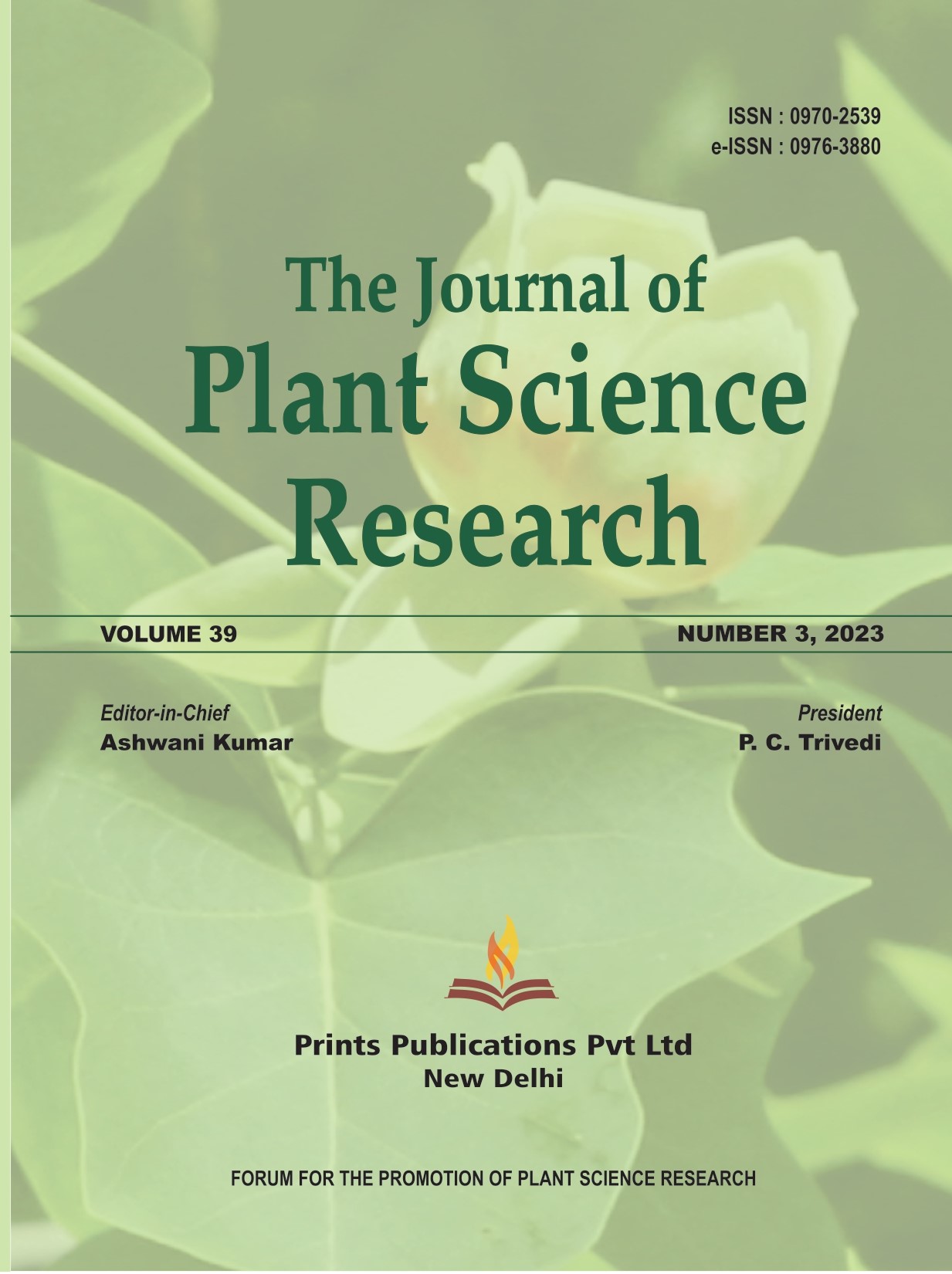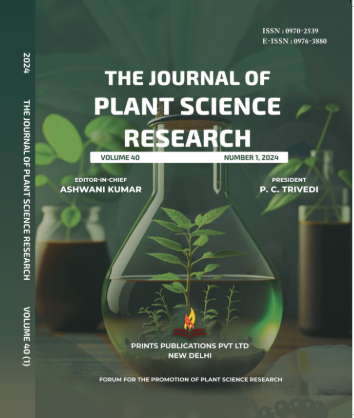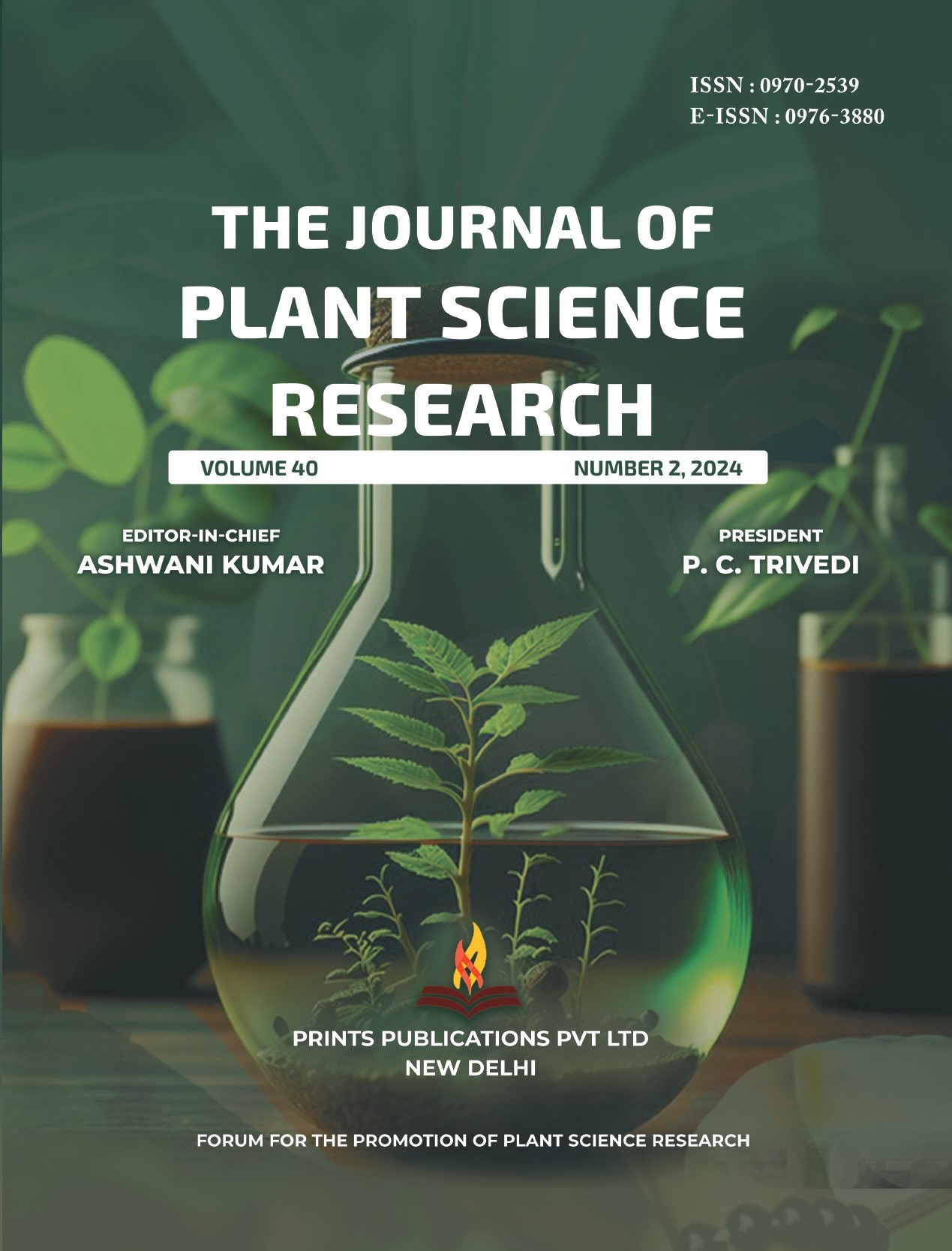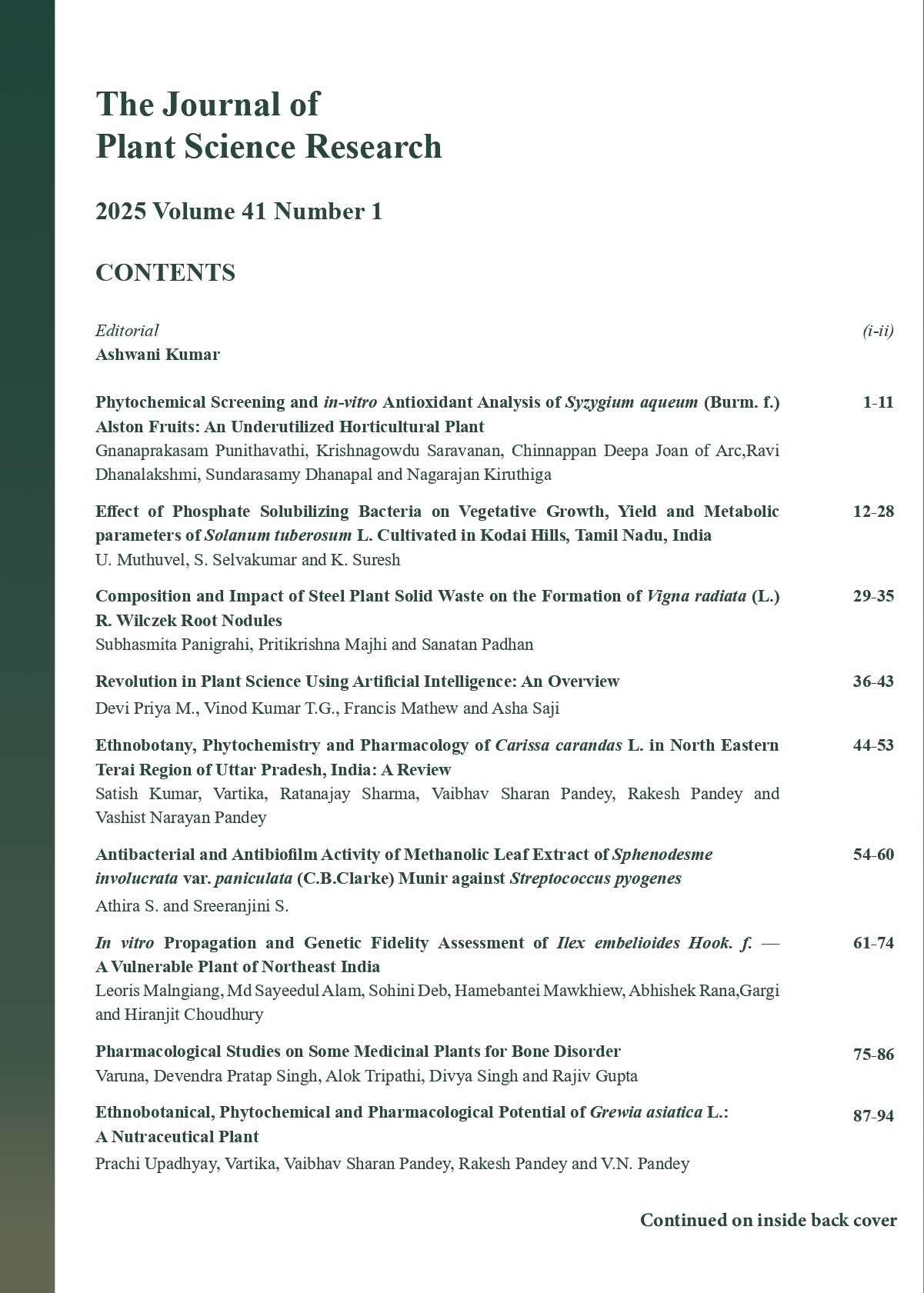The Journal of Plant Science Research - A UGC Care-Listed Journal
Published in Association with Forum For the Promotion of Plant Science Research
Current Volume: 41 (2025 )
ISSN: 0970-2539
e-ISSN: 0976-3880
Periodicity: Tri-annual
Month(s) of Publication: April, August & December
Subject: Botany
DOI: 10.32381/JPSR
Online Access is Free for Life Member
Diversity Assessment, Utility, Ethno Medicinal Uses and Conservation Status of Medicinal Plants in Tehri District, Uttarakhand, India
By : Pradeep Kumar, G. K. Dhingra, L. R. Dangwal
Page No: 523-536
Abstract
Natural resources are used for food, medicine, fodder, dyeing, fuel, timber, rituals, and a variety of other purposes. The present study was carried out in the Chamba, Narendra Nagar, Jakhnidhar, Thauldar, Pratapnagar, Hindolakhal, Bhilangna, Kirtinagar and Jaunpur blocks of Tehri District, Uttarakhand. The study aimed to assess plant diversity, utilization patterns, and ethno medicinal uses by local residents. A total of 99 species were identified, belonging to 89 genera and 51 families. These included shrubs (22 species), trees (36 species), herbs (40 species), and climbers (1 species). The families Fabaceae (7 species), Asteraceae (10 species), Moraceae (6 species), Lamiaceae (3 species), Solanaceae (4 species), Myrtaceae (4 species), Brassicaceae (1 species), Euphorbiaceae (2 species), and Rosaceae (6 species) were species-rich. Dominant genera included Ficus (6 species), Allium (2 species), Bauhinia (2 species), Acacia (2 species), Cassia (2 species), Phyllanthus (2 species) and Rumex (2 species). The species were used for various purposes: medicine (98 species), food (25 species), fuel (30 species), fodder (48 species), ornamental (13 species), timber (6 species), and religious practices (6 species). This paper provides the scientific names of wild plants, along with their common names, local names, family, life form, ethno medicinal uses, IUCN status, and plant parts used by the area’s residents. Locals utilize plant parts such as whole plants, roots (including rhizomes and tubers), leaves, flowers, fruits, seeds, and stems to treat various diseases.
Authors :
Pradeep Kumar : Department of Botany, Pt. L.M.S. Govt. PG College Rishikesh, Uttarakhand, India and Department of Botany and Microbiology, H. N. B. Garhwal University, Srinagar, Uttrakhand, India.
G. K. Dhingra : Department of Botany, Pt. L.M.S. Govt. PG College Rishikesh, Uttarakhand, India.
L. R. Dangwal : Department of Botany and Microbiology, H. N. B. Garhwal University, Srinagar, Uttrakhand, India.
DOI: https://doi.org/10.32381/JPSR.2024.40.03.17






